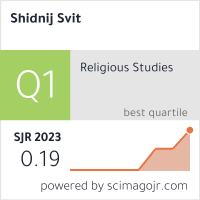Shevchenko A. M. The economy of Budzhak in the Ottoman-Tatar period (late 15th – early 19th centuries)
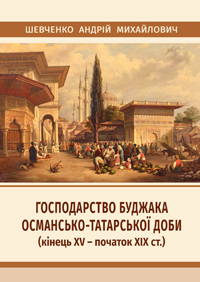
Shevchenko A. M. The economy of Budzhak in the Ottoman-Tatar period (late 15th – early 19th centuries). – Kamianets-Podilskyi: FOP Pankova A. S., 2024. – 96 p.: ill. (In ukrainian)
ISBN 978-617-7773-71-8
The popular science publication examines the main stages and features of the formation of the economic system of Budjak during its Ottoman-Tatar development (15th – early 19th centuries). The main attention is paid to the legal, economic, and resettlement aspects of the regional policy of the Ottoman state regarding the transformation of the region into a developed center of commodity cattle breeding and agriculture, which became one of the main suppliers of food to Istanbul. The features of commodity and semi-commodity relations in Budjak are determined, the historical, climatic, geopolitical, and ethnosocial factors that ensured the development of traditional industries for the region are traced, and the role of the cities of Budjak in the trade system of the Northern Black Sea region of that time is analyzed. Recommended for researchers, teachers, students, and everyone interested in the history of Budjak in the Islamic era.
“Niemand kann alleine kämpfen” “Nobody can struggle alone” “Ніхто не може боротися наодинці”: an Egyptological volume on behalf of Ukraine
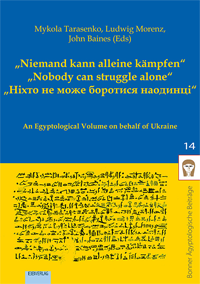
The war of Russia against Ukraine is also a war against a culture, and for this reason it affects even a small subject like Egyptology. Twenty-four authors from eight countries have come together to contribute to a volume that intends to display our solidarity with Ukraine and to make plain that all of us seek actively to sustain cultures – in our case the understanding of that of the Nile with its more than three millennia of history – through engagement and shared conversations. By means of this joint undertaking we wish to counter brute force with the self-evident necessity of cultural exchange, both in our field of study and beyond.
M. Tarasenko, L. Morenz, J. Baines (ed.) “Niemand kann alleine kämpfen” “Nobody can struggle alone” “Ніхто не може боротися наодинці”: an Egyptological volume on behalf of Ukraine. Bonner Ägyptologische Beiträge. Bd. 14. Berlin. 2024
ISBN-10 386893443X
ISBN-13 978-3868934434
What Trump’s Tilt Toward Russia Means for China.
U.S. President Donald Trump’s negotiations with Russia are not only occurring at Ukraine’s expense but also carry broader implications for China. Historically, the opposite was true – Henry Kissinger’s strategic opening to China contributed to the Soviet Union’s eventual collapse. Now, the Trump administration is playing a calculated game with Russia, aiming to secure economic benefits such as cheaper raw materials while attempting to reshape Sino-Russian relations. The goal appears to be to pull Moscow away from Beijing and weaken their growing alignment.
However, a repeat of the Sino-Russian split seems unlikely in today’s geopolitical landscape, as both Russia and China remain skeptical of Trump’s erratic foreign policy and question the reliability of U.S. commitments.
Trump’s confrontational stance toward Ukraine’s President Volodymyr Zelenskyy has been a political shock for both Ukraine and Europe. Notably, the Trump administration, whether intentionally or not, has adopted China’s rhetoric over the past three years, referring to the Russia-Ukraine War merely as a “conflict” and promoting peace through negotiations with Russia. This approach was first put forward by China in February 2023 and has since been aggressively pushed through state-controlled media and diplomatic channels, including special envoy Li Hui. Now the Trump administration has repackaged this strategy in a more unilateral manner, with a key difference – amid Russia-U.S. talks, Ukraine and Europe are largely excluded from the decision-making process. The fate of Ukraine’s sovereignty and territorial integrity is being discussed behind closed doors, without its participation.
Paul of Aleppo’s Journal. Vol. 1. Syria, Constantinople, Moldavia, Wallachia and the Cossaks’ Lands
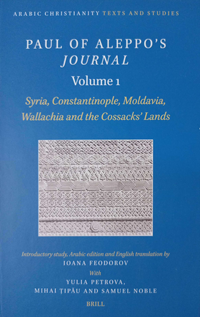
Paul of Aleppo’s Journal. Vol. 1. Syria, Constantinople, Moldavia, Wallachia and the Cossaks’ Lands / Introductory Study, Arabic Edition and English Translation by Ioana Feodorov with Yulia Petrova, Mihai Țipău and Samuel Noble. Leiden – Boston: Brill, 2024. 897 p.
https://brill.com/display/title/70121
Paul of Aleppo, an archdeacon of the Church of Antioch, journeyed with his father Patriarch Makarios III ibn al-Za’im to Constantinople, Moldavia, Wallachia and the Cossack’s lands in 1652-1654, before heading for Moscow. This book presents his travel notes, preceded by his record of the patriarchs of the Church of Antioch and the story of his father’s office as a bishop and election to the patriarchal seat. The author gives detailed information on the contemporary events in Ottoman Syria and provides rich and diverse information on the history, culture, and religious life of all the lands he travelled across.
ISSN 2468-2454
ISBN 978-90-04-69633-4 (hardback)
ISBN 978-90-04-69682-2 (e-book)
The academic journal “The World of the Orient” entered the 1st quartile of the Scopus
The academic journal “The World of the Orient” entered the 1st quartile of the Scopus international scientometric database in religious studies area. We remind you that “The World of the Orient” has been indexed in the Scopus database since 2019 in the following specialties: history, linguistics, philosophy,religious studies.In three other specialties, “The World of the Orient” entered the 2ndquartile of Scopus (according to SCImago Journal & Country Rank). The journal aims to activate academic research in the fieldofOriental Studies in Ukraine, to assert Oriental Studies as an important and integral part of Ukrainian humanitarian knowledge. The journal’s objectives are to promote the development of Oriental Studies, to introduce new sources into scientific circulation, to popularize the latest scientific achievements, to raise the level of research and to develop comprehensive scientific cooperation in this field. Since 1993, authors from more than 25 countries have published in the journal.
30.11.23 ХХVI A. Krymskyi Annual Memorial Conference on Oriental Studies
Dear colleagues!
We kindly invite you to take part in the International scientific conference “ХХVI A. Krymskyi Annual Memorial Conference on Oriental Studies”.
The conference will be held on November 30, 2023.
04.05.2022 The Third International Round Table “Pre-Islamic Near East: History, Religion, Culture”.
Dear colleagues,
We invite you to take part in the Third International Scientific Round Table “Pre-Islamic Near East: History, Religion, Culture”, which will be held on May 04, 2022.
On September 27, 1822, the French Orientalist Jean-François Champollion at a meeting of the Academy of Inscriptions in Paris announced his well-known “Letter to Mr. Docier on the alphabet of phonetic hieroglyphs” (Lettre à Mr. Dacier relative à l’alphabet des hiéroglyphes phonétiques) about his discovery of a method for decryption of the ancient Egyptian hieroglyphic writing. This event marked the appearance of a new discipline in Oriental studies – Egyptology. The Organizing Committee decided to time this year`s round table to the 200th Anniversary of Egyptology.
Historians, archaeologists, specialists in the history of religion, and philologists specializing in the study of ancient cultures of the Near East region are invited to participate in the meeting.
Working languages: Ukrainian, English.
Report schedule: up to 20 minutes.
Organizational fee is not provided.
The round table is planned to be held in a mixed format (face-to-face participation and zoom-conference mode).
Please confirm your participation in the meeting and send the topic and abstracts of the report by March 20, 2022 to the following e-mail addresses: niktarasenko@ukr.net; myktarasenko@gmail.com
Chairman of Organizing Committee: Mykola Tarasenko.
Secretary of Organizing Committee: Hanna Vertiienko.
It is planned to publish Abstracts and a Collection of Materials.
Requirements for the application and abstracts:
Title of the report, surname and name of the authors, e-mail address, academic degree, institution, city where the institution is located, country, text of abstracts (approx. 2000 characters with spaces) in Ukrainian and English languages).
Call for Papers 2022 (print version)
Liudmyla Kucheria
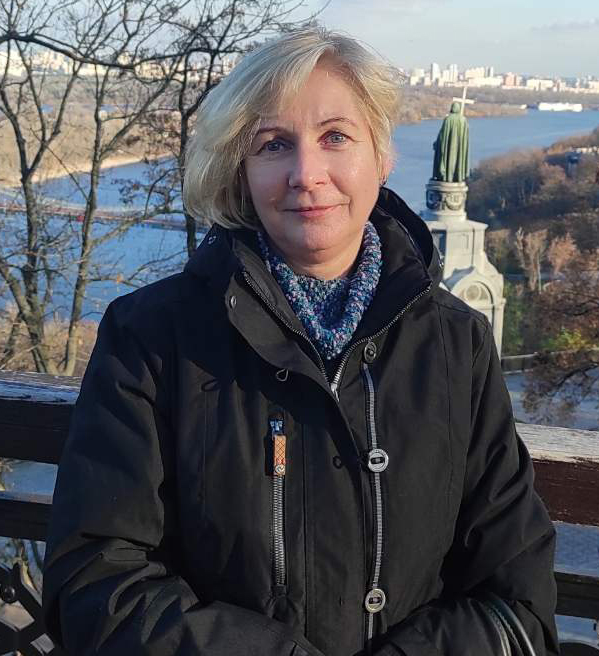
Romanova O., Stanytsina H. Ancient Egypt in Kyiv mirrored on glass (сollection of glass photonegatives from the Scholarly Archive of the Institute of Archaeology of NASU)
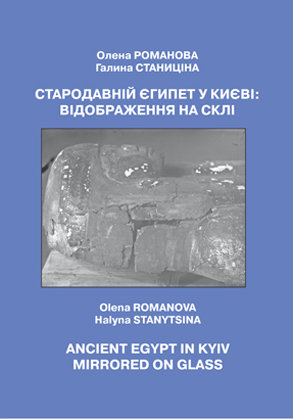
Bilingual (Ukrainian and English) book is a catalogue of a unique “Ancient Egypt” Сollection of photonegatives on glass from the Scholarly Archive of the Institute of Archaeology of the National Academy of Sciences of Ukraine. The catalogue includes 143 photos of the ancient Egyptian artefacts and sites supplied with their required data, and chapters about the ancient Egyptian objects and sites shown on the photos. Additionally, the study of the history of the negatives production together with the history of collections of the Ancient Egyptian objects in Kyiv museums of ХІХ–ХХ centuries are added. The conclusion was made that the collection and its history uncovers an unknown page of Ukrainian humanities and culture. The book is aimed at the audience of Egyptologists, historians who study Museum Egyptology, Ukrainian humanities and culture in ХІХ–ХХ centuries, and for the general audience.
Romanova O., Stanytsina H. Ancient Egypt in Kyiv mirrored on glass (сollection of glass photonegatives from the Scholarly Archive of the Institute of Archaeology of NASU) / Institute of Archaeology of the NAS of Ukraine; A. Yu. Krymskyi Institute of Oriental Studies of the NAS of Ukraine. – Kyiv, 2021. – 336 p.; 75 pls.
ISBN 978-617-78-10-27-7 (paper) ;
ISBN 978-617-78-10-28-4 (eBook).
Usenko IMAGES OF ANCIENT EGYPT IN MODERN MASS CULTURE (ON THE EXAMPLE OF THE FILM “GODS OF EGYPT”)
IMAGES OF ANCIENT EGYPT IN MODERN MASS CULTURE (ON THE EXAMPLE OF THE FILM “GODS OF EGYPT”)
I. V. Usenko
Student V. N. Karazin Kharkiv National University 4, Svobody Sq., Kharkiv, 61022, Ukraine usenkingo@gmail.com
This article with the help of semiotic and hermeneutic methods highlights the representation of Ancient Egypt images in mass modern culture on the example of the film “Gods of Egypt”. Nowadays the interest in ancient Egyptian art culture and history is presented not only in scientific perspective but also in mass culture. Each of these works includes a unique vision and interpretation of myths and history created by the author. However not all of them include representation of history and culture of Egypt that may be called authentic. This work with the help of analysis depicts the way of interpretation of mythological material in the film, namely the interpretation of Osiris myth, myths about the Solar vessel and the afterlife. The images of Egyptian gods are examined and compared with their representation in the film, particularly it is made with the help of colour symbolism in Egyptian culture. It also turns out, that film as a product of modern mass media includes techniques, that belong to mass culture such as citation technique (depiction of Sauron’s tower – Barad Dur from the thrilogy by J. R. R. Tolkien, filmed by the director Peter Jackson), standardization, usage of basic plots (conflict between good and evil). Mass culture is a phenomenon which is based on the generalization and availability, but in many cases it leads to simplification that violates the logic of authentic meanings. Therefore, despite the fact that “Gods of Egypt” include the reflection of Egyptian culture and mythology, the analysis showed that the film lost its authenticity and logic of perception (binary that is represented in the ancient Egyptian culture by terms “Isfet and Maat”) due to standardization. Also the accent in the film was made on the conflict between good and evil, presented by figures of Seth and Horus.
Keywords: mass modern culture, “The Gods of Egypt”, Osirian Myth, Osiris, Egyptian culture, Egyptian mythology
Preislamic Near East 2021, (2):181-187
https://doi.org/10.15407/preislamic2021.02.181
Full text (PDF)
REFERENCES
Karlova K. F. (2018), “Set – Vladyka Isefet: k voprosu ob interpretatsii epiteta”, Vestnik Moskovskogo gosudarstvennogo oblastnogo universiteta. Seriya: Istoriya I politicheskiye nauki, No. 3. pp. 40–7. (In Russian).
Karlova K. F. (2020), “Peribsen i Nizhniy Egipet”, Oriyentalistika, Vol. 3, No. 5, pp. 1249–58. (In Russian). https://doi.org/10.31696/2618-7043-2020-3-5-1249-1258
Lavrentyeva N. V. (2012), Mir ushedshikh. Duat: obraz inogo mira v iskusstve Egipta (Drevneye i Sredneye Tsarstva), Russkiy fond sodeystviya obrazovaniyu i nauke, Moscow. (In Russian).
Lipinskaya Y. and Martsinyak M. (1983), Mifologiya Drevnego Egipta, translated by E. Gessen, Iskusstvo, Moscow. (In Russian).
Plutarkh (1996), Isida i Osiris, translated by N. Trukhina, UTSIMM-PRESS, Kiev. (In Russian).
Rak. I. V. (2004), Egipetskaya mifologiya, Knizhnyy klub, Kharkov. (In Russian).
Zhdanov V. V. (2006), Evolyutsiya kategorii Maat v drevneyegipetskoy mysli, Sovremennyye tetrad, Moscow. (In Russian).
Assmann J. (2005), Death and Salvation in Ancient Egypt, translated by D. Lorton, Cornell University Press, Ithaca and London.
Boddy-Evans A. (2019), “Colors of Ancient Egypt”, available at: https://www.thoughtco.com/colors-of-ancient-egypt-43718 (accessed: 20.02.2020).
Bogg J. (2007), “Ancient Egyptian Royalty”, available at: http://djeserkara-royalty.blogspot.com/ (accessed: 20.02.2020).
Smith M. (2017), Following Osiris, Oxford University Press, Oxford. https://doi.org/10.1017/S2753906700002205



